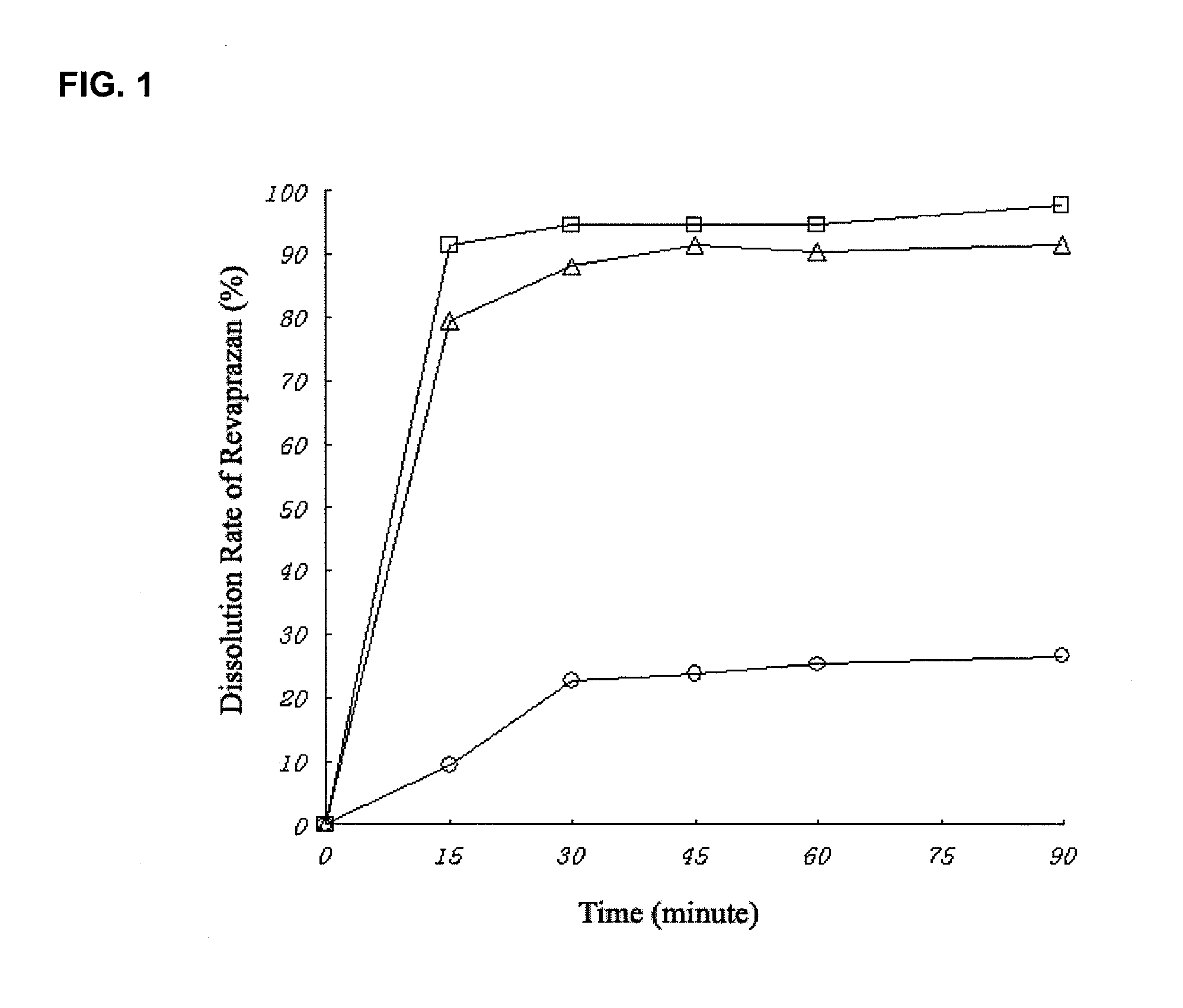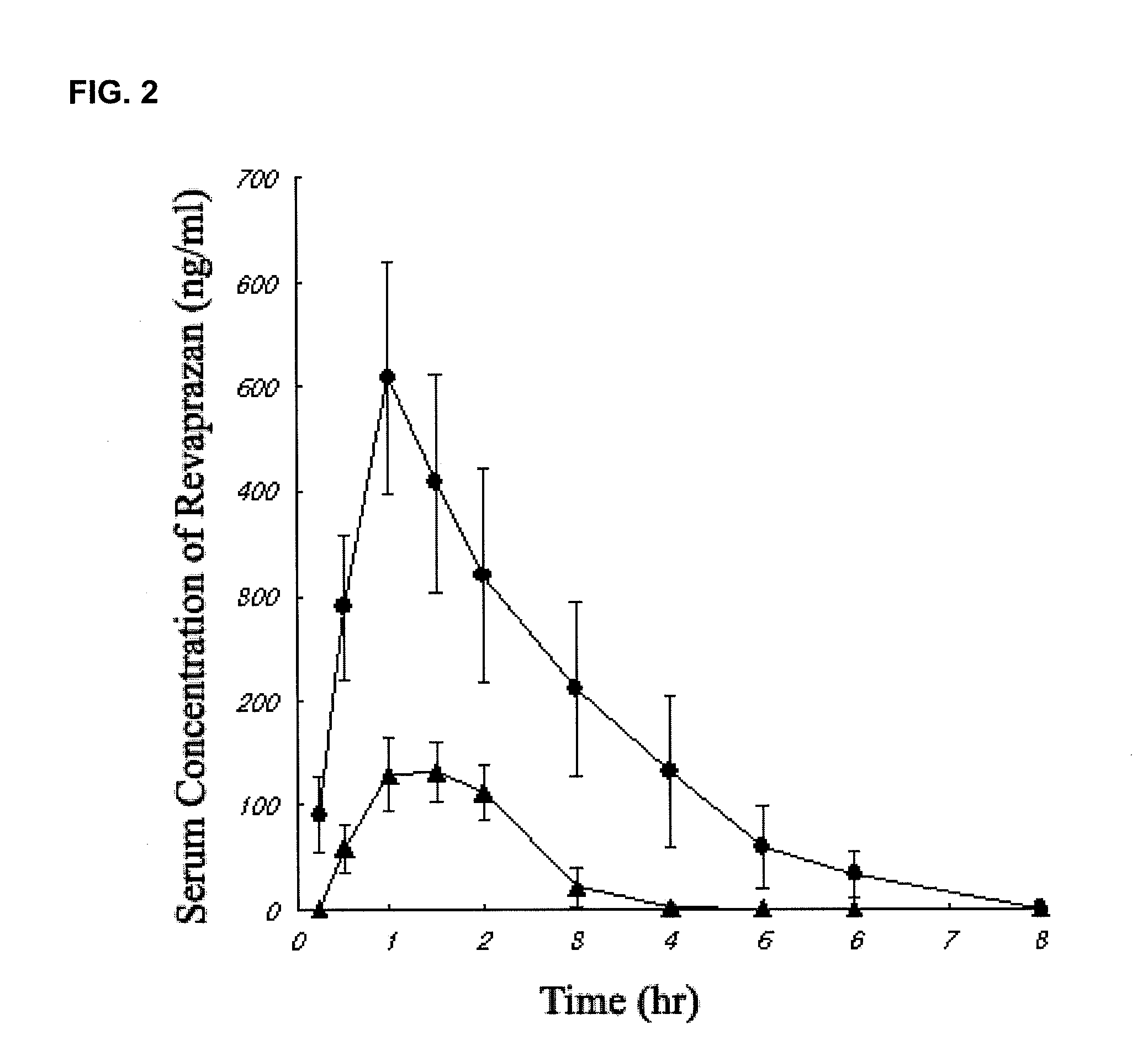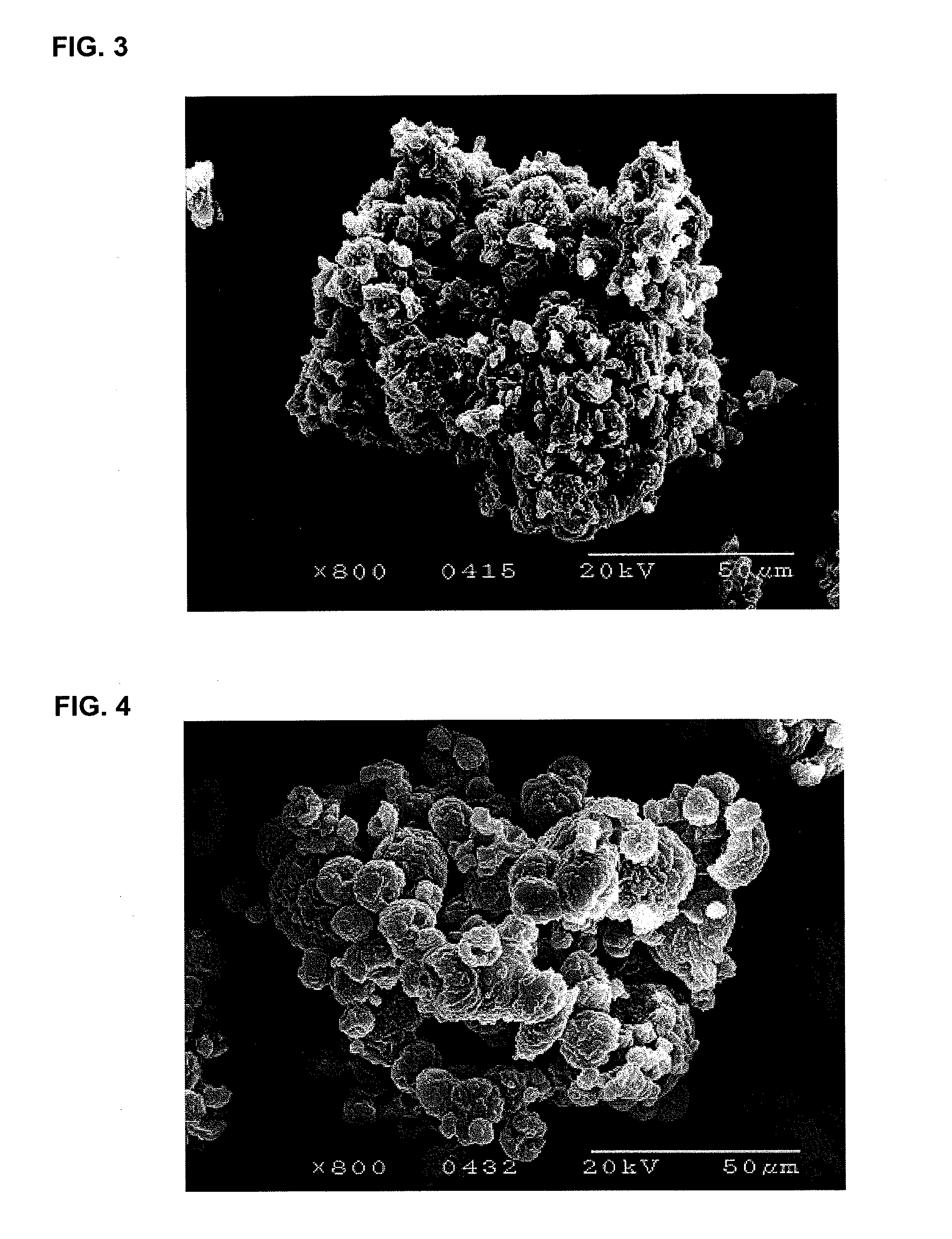Revaprazan-containing solid dispersion and process for the preparation thereof
a technology of solid dispersion and revaprazan, which is applied in the field of revaprazancontaining solid dispersion and process for the preparation thereof, can solve the problems of low formulation processability, achieve the effects of improving the solubility and/or dissolution rate of revaprazan, increasing the penetration and solubility properties of the drug, and improving the bioavailability
- Summary
- Abstract
- Description
- Claims
- Application Information
AI Technical Summary
Benefits of technology
Problems solved by technology
Method used
Image
Examples
examples 2-19
Preparation of Solid Dispersion
[0049]Solid dispersions were prepared in the same manner as in Example 1 according to the components and amounts shown in Table 1. The amount of purified water used was 10 ml per 1 g of the total amount of the components used.
TABLE 1SucrosePolyvinyl-fatty acidGelucireSolutolPolysorbateCremophorPoloxamerEx.Revaprazanpyrrolidoneester44 / 14 ™HS 15 ™80 ™RH 40 ™407 ™2100 g150 g 3100 g100 g 4100 g50 g5100 g 5 g6100 g100 g 7100 g50 g8 10 g50 g9100 g10 g30 g10 10 g90 g11100 g10 g70 g15 g12100 g20 g60 g20 g13100 g20 g15 g40 g14100 g15 g120 g 20 g15100 g15 g11.25 g 26.25 g 16100 g20 g10 g10 g50 g17100 g20 g15 g60 g18100 g10 g60 g20 g20 g19 10 g50 g10 g10 g
example 20
Preparation of Solid Dispersion
[0050]20 g of β-cyclodextrin and 80 g of lactose were dissolved in 2,000 ml of purified water. While stirring the resulting solution with a mechanical stirrer, 100 g of revaprazan was added thereto to obtain a suspension. The obtained suspension was homogenized by passing three times through a microfluidizer at a pressure of 10,000-15,000 psi. The obtained suspension was spray-dried with Mini spray dryer (Buchi 190) under the condition of: 120 to 130° C. of an inlet temperature and 80 to 90° C. of an outlet temperature to obtain a solid dispersion.
examples 21-32
Preparation of Solid Dispersion
[0051]Solid dispersions were prepared in the same manner as in Example 20 according to the components and amounts shown in Table 2. The amount of purified water used was 10 ml per 1 g of the total amount of the components used.
TABLE 2PolyethyleneHydroxypropylHydroxypropylmethylVitaminPolyvinyl-glycolPoloxamerEx.Revaprazanβ-cyclodextrinLactoseMannitolcelluloseE TPGS ™pyrrolidone6000407 ™21100 g100 g 20 g22100 g60 g23100 g100 g 24 10 g60 g20 g20 g25100 g20 g60 g26100 g50 g27100 g100 g 28100 g50 g50 g29100 g150 g 50 g30100 g10 g10 g31100 g60 g50 g32100 g60 g50 g50 g
PUM
| Property | Measurement | Unit |
|---|---|---|
| solubility | aaaaa | aaaaa |
| outlet temperature | aaaaa | aaaaa |
| outlet temperature | aaaaa | aaaaa |
Abstract
Description
Claims
Application Information
 Login to View More
Login to View More - R&D
- Intellectual Property
- Life Sciences
- Materials
- Tech Scout
- Unparalleled Data Quality
- Higher Quality Content
- 60% Fewer Hallucinations
Browse by: Latest US Patents, China's latest patents, Technical Efficacy Thesaurus, Application Domain, Technology Topic, Popular Technical Reports.
© 2025 PatSnap. All rights reserved.Legal|Privacy policy|Modern Slavery Act Transparency Statement|Sitemap|About US| Contact US: help@patsnap.com



